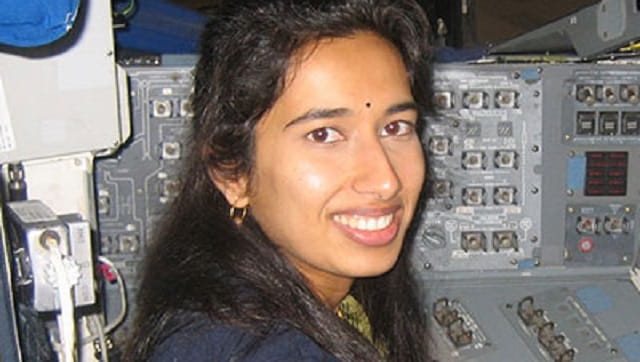
Mohan’s team played a key role in the entry, descent and landing (EDL) phase, which according to the NASA website was the shortest and most intense phase of the Mars 2020 mission
As the world witnessed the historic landing of NASA’s Perseverance rover on the Martian surface, it was Indian-American scientist, Swati Mohan, who led the guidance, navigation, and control operations of the Mars 2020 mission.
In essence, she was responsible for ensuring that the rover follows its trajectory and lands safely on the surface. And the landing was a moment Mohan had been patiently working towards over the past eight years.
“I’ve been on Perseverance longer than I’ve been at any school. I’ve been on Perseverance longer than my younger daughter is alive. It’s just taken up such a large portion of my life for so long,” she told Florida Today.
Mohan’s team played a key role in the entry, descent and landing (EDL) phase, which according to the NASA website was the shortest and most intense phase of the Mars 2020 mission.
Why was Perseverance Rover’s landing a crucial moment?
The touchdown of the rover marks an ambitious first step in the effort to collect Mars samples and return them to Earth, said NASA in a statement after the successful landing of the spacecraft.
“This landing is one of those pivotal moments for NASA, the US, and space exploration globally — when we know we are on the cusp of discovery and sharpening our pencils, so to speak, to rewrite the textbooks,” said acting NASA Administrator Steve Jurczyk.
“The mission itself personifies the human ideal of persevering towards the future and will help us prepare for human exploration of the Red Planet,” Jurczyk said in a statement.
The successful landing of the rover was also a watershed moment as EDL, is considered the most crucial phase of a space mission. So far only 40 percent of missions sent to Mars by various space agencies have been successful. In fact, in the last 50 years, only eight landings have been successful.
For a mission that took almost a decade to come to realisation, the EDL phase was roughly just seven minutes long. Yet, this is the most nerve-wracking phase for the team behind such missions as a dizzying number of things need to collectively go right for a successful landing.
According to NASA, the main challenge for the rover was to decrease its speed from roughly 20,000 kilometres per hour to zero within seven short minutes. To safely go from those speeds down to zero, in that short amount of time, while hitting a narrow target on the surface, requires “slamming on the brakes” in a very careful, creative and challenging way.
Mohan also confirmed that the rover had survived a particularly tricky plunge through the Martian atmosphere.
“Touchdown confirmed,” exclaimed Mohan.
Who is Dr Swati Mohan?
Mohan was born in India but she emigrated to the US when she was one along with her family.
Raised in Northern Virginia and Washington DC metro area, she completed her bachelor’s degree from Cornell University in Mechanical and Aerospace Engineering, and her MS and PhD from Massachusetts Institute of Technology (MIT) in Aeronautics/Astronautics.
Over the course of her career with NASA, Mohan has worked on the Cassini mission to Saturn and GRAIL — a pair of formation flown spacecraft to the Moon, and has been a mainstay with the Mars 2020 mission since its beginning in 2013.
According to Mohan, her interest in space was piqued after watching the popular TV show Star Trek when she was 9.
“Seeing the beautiful depictions of the new regions of the universe that they were exploring. I remember thinking ‘I want to do that. I want to find new and beautiful places in the universe.’ The vastness of space holds so much knowledge that we have only begun to learn,” she had told NASA.
However, the special interest in space and astronomy did not solidify into a career choice for Mohan until her mid-teens.
“Actually, I wanted to be a paediatrician until I was about 16 years old. I was always interested in space, but I didn’t really know about opportunities to turn that interest into a job.”
Mohan noted that her passion for space increased further when she took her first physics class.
“When I was 16, I took my first physics class. I was lucky enough to have a great teacher, and everything was so understandable and easy. That was when I really considered engineering, as a way to pursue space.”
How was Mohan’s job important in the success of the mission?
Mohan personally oversaw the operations of the Guidance, Navigation, and Controls (GN&C) team. She was the lead systems engineer throughout the development phase and also headed the attitude and control system of the mission.
Commenting on her team’s role in the current mission, Mohan said during the cruise phase heading toward Mars, their job is to figure out how the spacecraft is oriented, and make sure it is pointed correctly in space — “solar arrays to Sun, antenna to Earth, and maneuver the spacecraft to get it where we want to go.”
She says the Guidance, Navigation, and Controls Operations (GN&C) are “eyes and ears” of the spacecraft.
She said during the “seven minutes of terror” leading to the entry, descent, and landing on Mars, GN&C determines the position of the spacecraft and commands the maneuvers to help it land safely.
“As the team’s operations lead, I am the primary point of communication between the GN&C subsystem and the rest of the project.
“I am responsible for the training of the GN&C team, scheduling the mission control staffing for GN&C, as well as the policies/procedures the GN&C uses in the mission control room,” Mohan noted.
With inputs from PTI
Subscribe to Moneycontrol Pro at ₹499 for the first year. Use code PRO499. Limited period offer. *T&C apply
Post a Comment